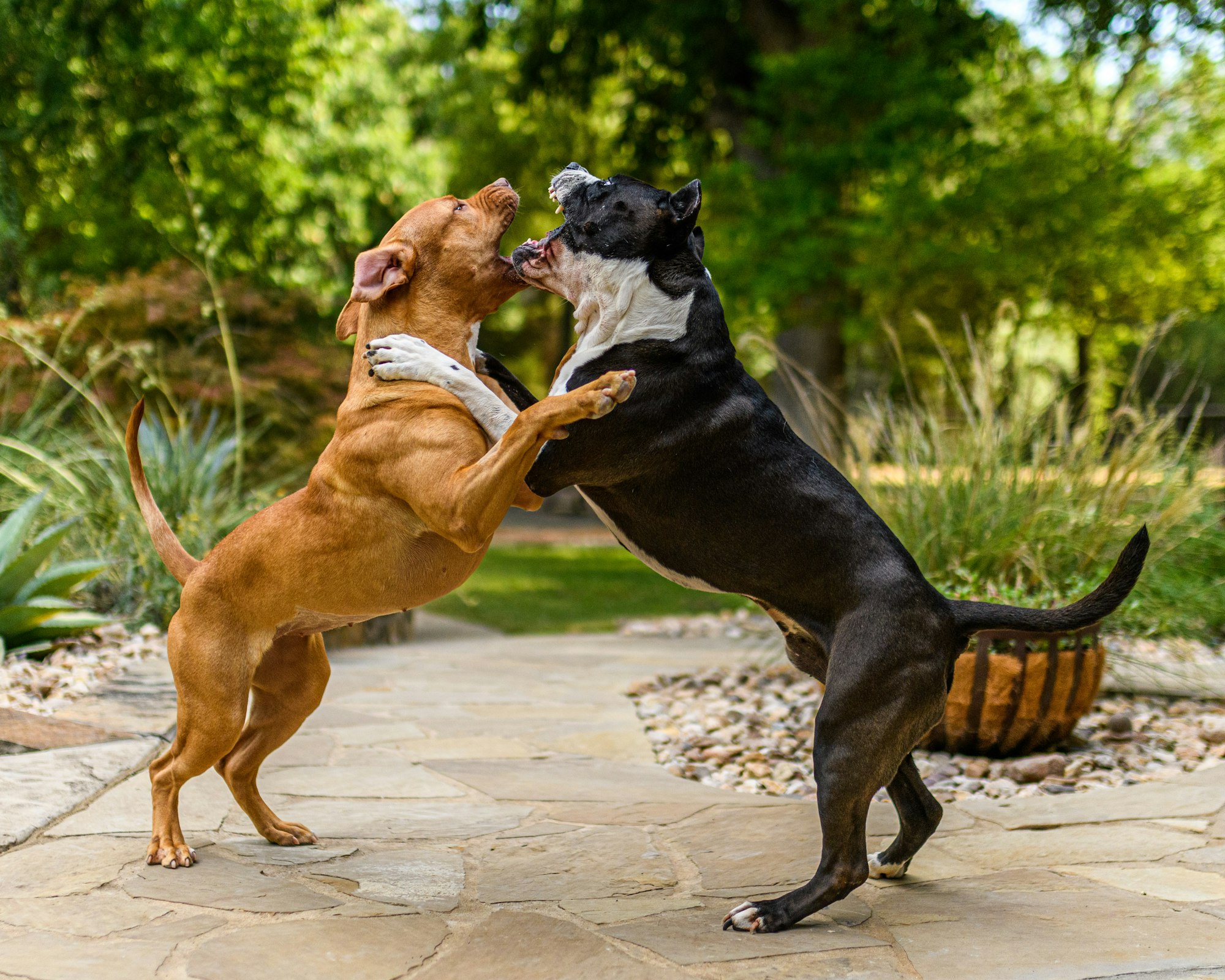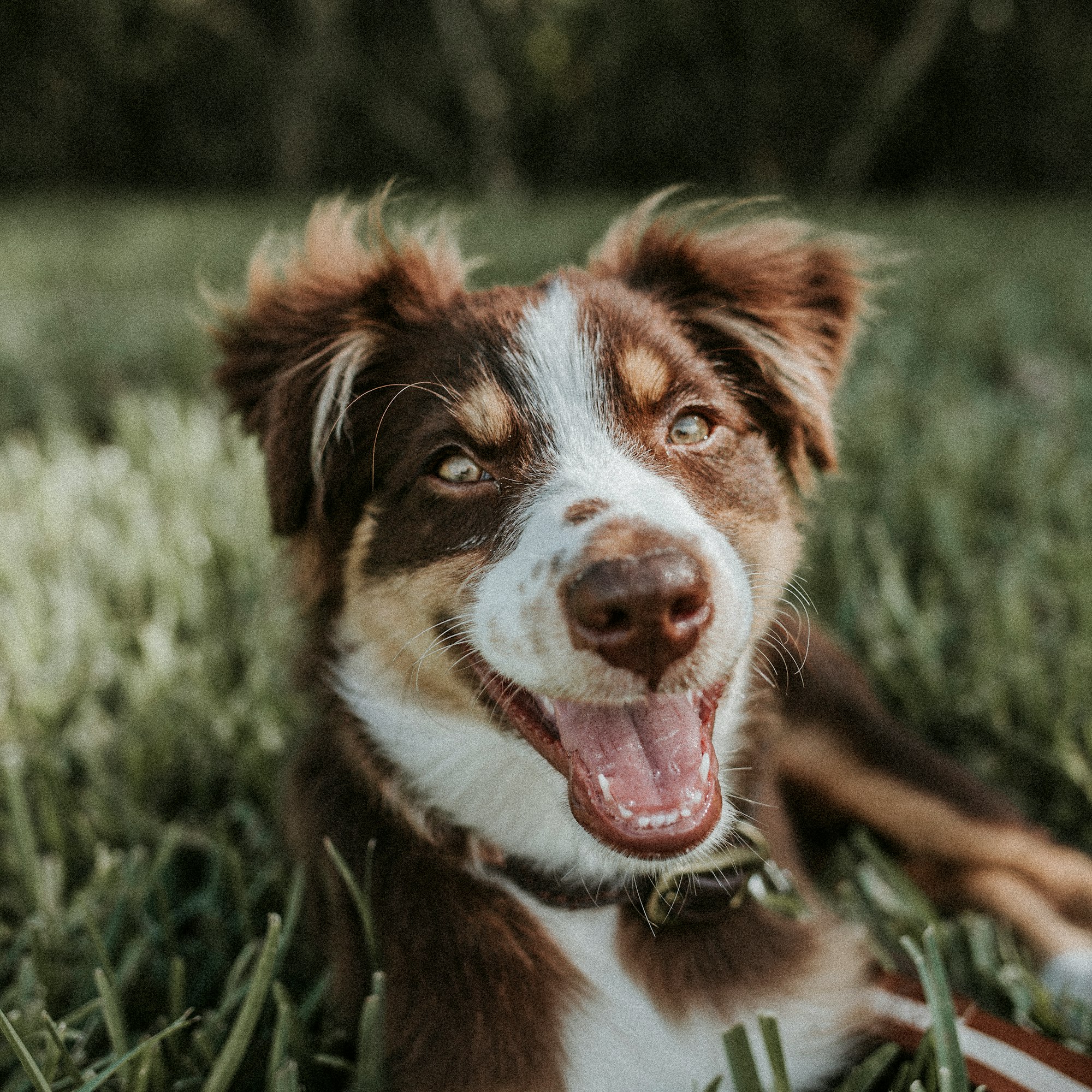Resource guarding is a common behavioral issue in dogs that can be perplexing and even potentially dangerous if not addressed correctly. In this article, we will delve into the world of resource guarding, exploring its causes, prevention, and effective ways to deal with it while strengthening the bond between you and your furry friend.

Understanding Resource Guarding
Resource guarding is a behavior exhibited by some dogs where they aggressively protect items they consider valuable. This behavior can manifest in various forms, such as guarding food, toys, or even certain areas within your home. Understanding resource guarding is essential for effective management and training.
Types of Resources
Dogs can guard a wide range of resources, including:
1. Food: Food aggression is a common form of resource guarding. Dogs may growl or snap when approached while eating, attempting to protect their meal.
2. Toys: Some dogs become possessive of their puzzle toys. They might not want to share or may become aggressive when someone tries to take a toy from them.
3. Space: Guarding space refers to dogs who become territorial over their resting spots, like a bed or a couch. They may react defensively when someone approaches or tries to move them.
Signs of Resource Guarding
Recognizing the signs of resource guarding is vital for early intervention. These signs can include:
- Growling: The dog may emit a low, rumbling growl when someone approaches.
- Snapping: In extreme cases, a dog might snap or lunge at the perceived threat.
- Stiff Body Language: Dogs may exhibit tense or stiff body language when guarding.
- Freezing: Some dogs freeze in place when guarding an item, making them difficult to approach.

Causes and Triggers
Understanding the underlying causes and triggers of resource guarding is crucial for addressing this behavior effectively.
Resource guarding can stem from a combination of factors, including:
- Instinctual Behavior: Dogs have natural instincts to protect their resources, which can be more pronounced in certain breeds.
- Past Trauma: Dogs that have experienced resource scarcity or competition in their past may be more prone to guarding.
- Fear or Insecurity: A dog may guard out of fear or insecurity, believing that someone will take away their possessions.
Identifying Triggers
Triggers can vary from one dog to another. Common triggers for resource guarding include:
- Approach: Dogs may guard when someone approaches them or their resource.
- Touch: Physical contact, such as attempting to take an item away, can trigger guarding.
- Other Animals: The presence of other pets can lead to resource guarding, especially during mealtime or play.
Understanding the specific triggers for your dog's resource-guarding behavior is essential for developing a tailored training plan to address the issue effectively.
Preventing Resource Guarding
Preventing resource guarding in dogs is a proactive approach that can help ensure a harmonious relationship between you and your furry companion. Early intervention and training can significantly reduce the likelihood of resource-guarding behaviors.
Early Socialization
Early socialization is a critical step in preventing resource guarding. Expose your puppy to various people, animals, and situations from a young age. This helps them build confidence and learn to adapt to different environments and interactions. A well-socialized dog is less likely to feel threatened by others around their resources.
Positive Reinforcement Training
Positive reinforcement training is a powerful tool for preventing resource guarding. Teach your dog that sharing and giving up resources results in rewards. Here's how:
- Trading Game: Encourage your dog to "trade" their item for something of equal or higher value. For example, if your dog has a toy, offer a treat in exchange. This creates a positive association with sharing.
- Drop It Command: Teach your dog the "drop it" command. When your dog willingly releases an item, reward them with praise and treats. Consistent practice reinforces the idea that letting go is a good thing.
Teaching the "Drop It" Command
The "drop it" command is a valuable tool for preventing resource guarding and addressing it if it arises. Here's how to teach it:
- Start with a low-value item or toy that your dog is not particularly possessive of.
- Allow your dog to play with the item.
- Present a high-value treat (something your dog really loves) and show it to your dog without giving it to them.
- Say "Drop it" in a calm but firm voice. Do not shout.
- When your dog drops the item to take the treat, immediately reward them with the treat and praise.
- Repeat this training regularly with different items, gradually increasing the value of the items over time.

Dealing with Resource Guarding
If your dog is already displaying resource-guarding behaviors, it's essential to address the issue promptly and effectively. Here are some strategies for dealing with resource guarding:
Seek Professional Help
If your dog's resource guarding behavior is severe or has led to aggressive actions, consult a professional dog trainer or a certified animal behaviorist. They can provide tailored guidance and create a behavior modification plan that suits your dog's specific needs.
Gradual Desensitization
Gradual desensitization involves exposing your dog to the triggers of resource guarding in a controlled and systematic way. Here's how to do it:
- Identify the specific triggers that lead to resource guarding, such as approaching while your dog is eating.
- Start with a very mild version of the trigger. For example, stand a few feet away from your dog while they eat.
- Reward calm behavior. If your happy dog remains relaxed, offer praise and treats.
- Slowly decrease the distance or increase the intensity of the trigger over time, always rewarding calm behavior.
- Be patient and progress at your dog's pace. The goal is to help them associate these triggers with positive outcomes.
Avoid Punishment
Avoid punishing your dog for resource guarding. Punishment can escalate aggression and make the problem worse. Instead, focus on positive reinforcement and behavior modification techniques.
Addressing resource guarding in dogs requires patience, consistency, and a deep understanding of your dog's needs and behaviors. With the right approach, you can help your dog overcome resource guarding and strengthen your bond in the process.
The Role of Consistency
Consistency plays a pivotal role in addressing and managing resource-guarding behavior in dogs. When it comes to training and behavior modification, maintaining a consistent approach across all aspects of your dog's life is essential for long-term success.
Why Consistency Matters
Consistency helps your dog understand what is expected of them and creates a stable environment that reduces confusion. Here are some key areas where consistency is crucial:
1. Family Members
Ensure that all family members and anyone interacting with your dog follow the same rules and guidelines regarding resource sharing. Inconsistent responses to resource guarding can confuse your dog and reinforce the undesired behavior.
2. Training Techniques
Consistency in training techniques is vital. Use the same commands and cues consistently, and reward and correct behavior uniformly. This helps your dog learn more quickly and avoids mixed signals.
3. Routine
Maintain a consistent daily routine for your dog. This includes feeding times, exercise, and playtime. Predictability helps reduce separation anxiety and can contribute to a sense of security.
Case Studies: Real-Life Examples
Learning from real-life examples of dogs overcoming resource guarding can provide valuable insights into effective strategies and the potential for success. Here are a few case studies illustrating different scenarios and outcomes:
Case Study 1: Food Aggression
Dog: Max, a 2-year-old German Shepherd Issue: Max displayed dog food aggression, and growling when approached during mealtime.
Solution: Max's owner sought the help of a professional trainer who implemented a desensitization program. Max gradually learned that people approaching his food meant something positive – more delicious food or treats. Over time, Max became comfortable with people being around during meals.
Case Study 2: Toy Possession
Dog: Bella, a 4-year-old Border Collie Issue: Bella was possessive of her favorite squeaky toy and would guard it aggressively.
Solution: Bella's owner engaged in structured play sessions with her, teaching the "drop it" command. Whenever Bella relinquished the toy, she received a reward, and the toy was returned. Over time, Bella associated giving up her interactive dog toys with positive outcomes and stopped guarding it.

Case Study 3: Territorial Behavior
Dog: Lucy, a 3-year-old Labrador Retriever Issue: Lucy displayed territorial behavior, growling when someone tried to move her from the couch.
Solution: Lucy's owners practiced consistent "off" commands and positive reinforcement when she voluntarily left the couch. They also provided her with a comfortable designated resting area nearby. With patience and consistency, Lucy learned to share her resting spots without aggression.
These case studies demonstrate that with the right training and consistent approaches, dogs can overcome resource-guarding behaviors and live harmoniously with their human companions. However, it's essential to remember that each dog is unique, and professional guidance may be necessary for severe cases of resource guarding.
Common Misconceptions
can hinder effective understanding and management of this behavior. It's important to dispel these myths to ensure a more accurate and compassionate approach to addressing resource guarding.
Misconception 1: "All Dogs Will Outgrow It"
Reality: Not all dogs will naturally outgrow resource guarding. While some puppies may show resource-guarding behaviors that diminish with age, others may continue or escalate without intervention.
Misconception 2: "Punishment Will Fix It"
Reality: Punishing a resource-guarding dog can worsen the behavior. It may increase fear or aggression, making the issue more challenging to resolve. Positive reinforcement and behavior modification are more effective approaches.
Misconception 3: "It's Always About Dominance"
Reality: Resource guarding is not always a sign of dominance. Dogs may guard resources out of fear, insecurity, or learned behavior. Viewing it as a dominance issue oversimplifies the complex reasons behind this behavior.
Misconception 4: "It's Not a Big Deal"
Reality: Ignoring resource guarding can lead to dangerous situations. A dog's aggressive response can result in bites or injuries to humans or other pets. Addressing resource guarding is crucial for safety.
The Human-Dog Bond
Building a strong and positive bond between humans and their canine companions is a fundamental aspect of responsible dog ownership. Addressing resource guarding in a constructive and empathetic manner can enhance this bond rather than strain it.

How Addressing Resource Guarding Strengthens the Bond
- Trust: By teaching your dog that you won't take away their possessions aggressively, you build trust.
- Communication: Training to manage resource guarding fosters better communication between you and your dog.
- Positive Interactions: Using positive reinforcement and reward-based training creates a more positive association between you and your dog.
- Empathy: Understanding your dog's behavior and addressing their needs empathetically strengthens your connection.
Remember, addressing resource guarding is not just about preventing conflicts; it's also about creating a harmonious and loving relationship where both you and your dog can feel safe and understood.
Conclusion
Resource guarding in dogs is a complex issue, but with patience, understanding, and the right approach, it can be managed effectively. Remember that every dog is unique, and seeking professional guidance when needed is essential for the well-being of your furry companion.
FAQs
1. What are common signs of resource guarding in dogs?
Resource guarding signs include growling, snapping, stiff body language, or even biting when someone tries to approach their cherished possession.
2. Can resource guarding be prevented in all dogs?
While prevention is possible through early socialization and positive reinforcement training, some dogs may have a predisposition to resource-guarding. Professional guidance may be necessary.
3. Is it safe to try and take something from a resource-guarding dog?
It is generally not safe to forcibly take something from a resource-guarding dog. Seek professional help to address the issue safely.
4. How long does it take to overcome resource guarding?
The time it takes to overcome resource guarding varies from dog to dog. Consistency and patience are key factors.
5. Are certain dog breeds more prone to resource guarding?
Resource guarding can occur in any breed, but it may be more common in breeds with strong guarding instincts. Proper training and socialization can help mitigate this behavior.
In this comprehensive guide, we've explored the world of resource guarding in dogs, from understanding the signs and causes to prevention and effective intervention. Remember, a well-informed and compassionate approach is the key to a harmonious relationship with your canine companion.






